Expert in Food Quality: Eat diversely and switch between brands to avoid undesirable effects of mycotoxins
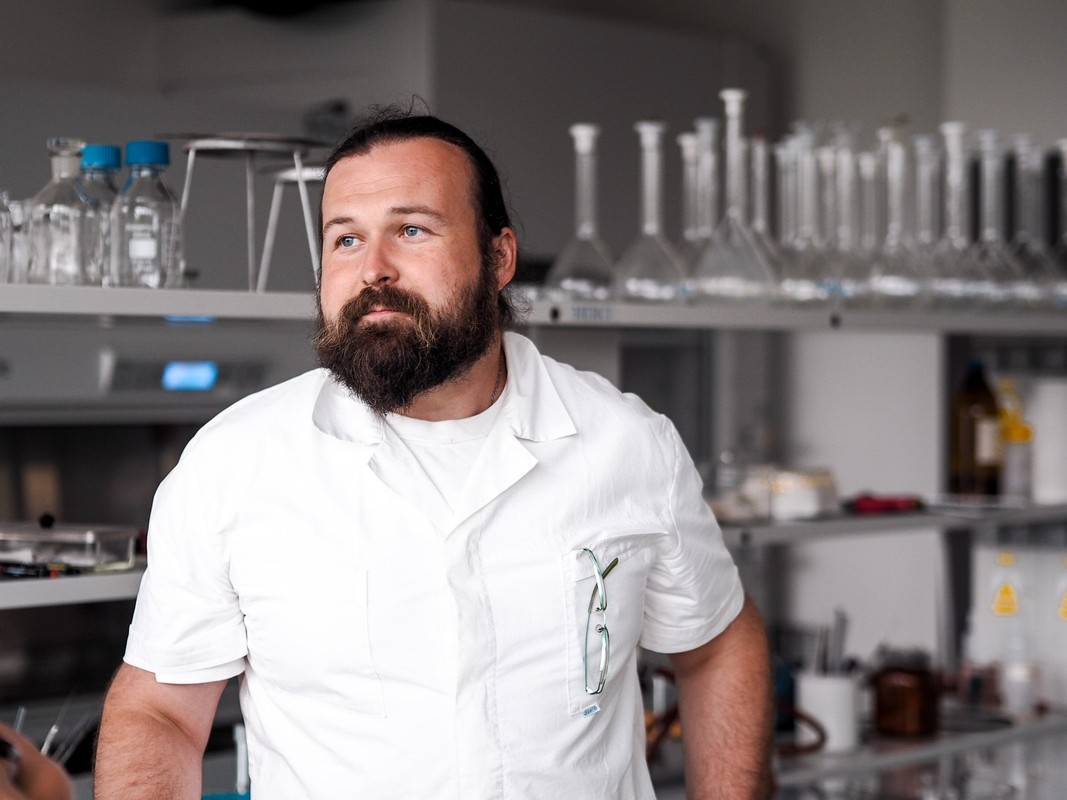
How do you combine the responsibilities of a scientist and an educator? Can a chaotic person handle laboratory sterility? What and how to practically teach students, not only in biology? Is it possible to eat healthily today, and what does "buying quality food" mean? We spoke with Dr. Jakub Toman, a biologist and ecologist from the Faculty of Science at the University of Hradec Králové, about his work and why he remains loyal to our city.
Interview Topics:
- Studying in Hradec Králové from a native perspective
- Mycotoxins and the course of biological research
- Complexity of presenting scientific projects
- Balancing the roles of scientist and educator
- Food industry
What was it like to study your whole life in Hradec Králové? Please describe your academic history to the readers.
I've been a "Hradečák" (resident of Hradec Králové) since birth. While I'm from Pardubice on paper, I've lived in Hradec my entire life. I'm not directly from Hradec Králové but from the outskirts. I attended an elementary school in Malšova Lhota, now an autonomous part of Hradec. Then, I went to Malšovice for the rest of my elementary school attendance. For high school, I was in the center of Hradec, at Grammar School J. K. Tyl, in a specialized mathematics class. I continued at the local university; back then, it was still at the Faculty of Education. In my second year, I transitioned to the newly established Faculty of Science in 2010. Well, I stayed here as "inventory," as they say. I pursued a doctoral degree in applied biology and ecology.
So why didn't you become a mathematician since you were in a specialized class? 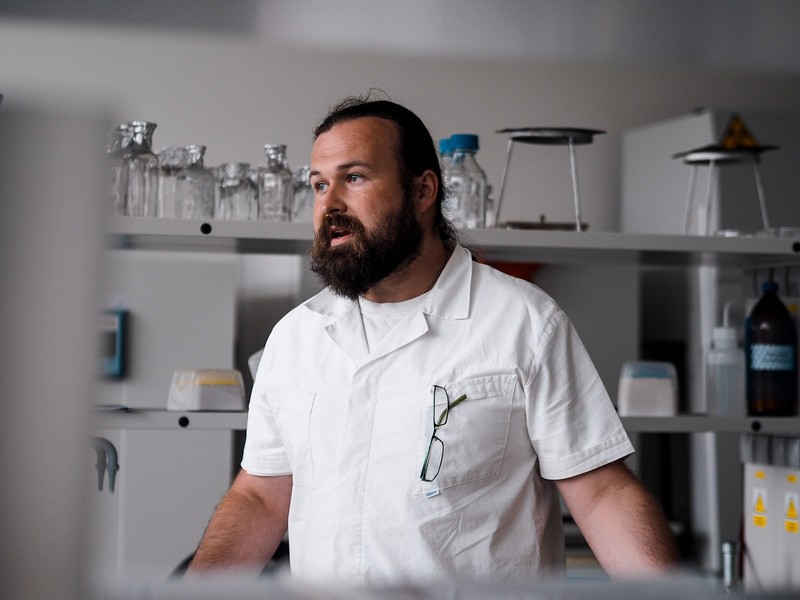
Imagine having 16 hours of mathematics per week! That truly exhausts you. But yeah, I still enjoy mathematics, and I use the knowledge daily even now. Many of my classmates went on to study things like nuclear physics at "Matfyz" (Faculty of Mathematics and Physics Charles University) in Prague. I was always drawn to biology; Úprkova Elementary is an eco-friendly school, and it's regularly recognized as such. We had an excellent principal who was very interested in that, so we had optional practicals in ecology, geology, geomorphology, etc. We went to the field a lot. And it stuck with me. But even biology can't do without mathematics. That might frighten many students. When I tell my students they'll have to do complex calculations, deal with statistics, etc., I see fear in their eyes. But unfortunately, mathematics will always serve. It will always be a descriptive science, even for biology.
Supposedly, the Grammar School J. K. Tyl teaches university-level mathematics. Do the grammar schools in Hradec compete with each other? Is one of them elite, the best?
I can't judge which of those schools is the best or the most elite. I can speak for our Faculty of Science; the best-prepared biology students come from Biskup Grammar School. It's probably partly due to Dr. Králíček, who also works with us. He prepares students for higher-level biology. However, the same goes for Dr. Hruška, who taught us and now teaches at the First Private Language Grammar School, where highly-prepared students also come from. So, it's clear that teachers who have or had something in common with the university teach high school students to excel in their fields. It really depends on people; if you have quality teachers, you have a quality institution. And such teachers can undoubtedly be found in all Hradec schools. Even in my Tyl.
You have experience with studying abroad, for example, in Germany. What ultimately convinced you to remain loyal to Hradec Králové?
It's all about people. I'm a conservative introvert, and dealing with people I don't know or have nothing in common is challenging. As a native of Hradec, I share a connection with people here. However, living with me isn't easy for others either. I'm both a perfectionist and a chaotic – my office is like a storage room, you won't find a place to sit there. But on the other hand, the laboratory has to be perfectly organized. I don't have every drawer labeled... maybe just half of them. But I know exactly where to find what. I don't like it when someone cleans up or moves things at work and home, and then I can't find them.
Nevertheless, the choice of field played a significant role too. Back then, it was called systematic biology and ecology. Now, it's just biology and ecology. During my bachelor's studies, there was a massive advantage in studying biological disciplines comprehensively from various perspectives: botanical, zoological, and experimental. The studies included not just lectures and labs but also field exercises. So, we went to the field for several days. I remember field exercises around Bramberk near Pec pod Sněžkou; we returned to our accommodations after 10 p.m., having covered 27 km on foot. Biology is physically demanding as well. And it can happen that sometimes you'll be knee-deep in peat in unfavorable weather. A biologist doesn't stay home just because it's raining – sturdy shoes or boots, raincoats – essential gear. And students are pretty surprised by this. For instance, in the Orlické Mountains, water regularly flowed into our shoes, and once a storm hit Babiččino Údolí, we weathered it at a bus stop. But a person has to be resilient. Then, you gain experiences from it, and it's these experiences that might foster an attachment to the place where you earned them.
Today, you are involved in researching food quality. Do you still get into the field among the tested products?
We regularly collect samples even in stores, so yes, it's a slightly different kind of field research. Less adrenaline-pumping, although... Dr. Ostrý, with whom I collaborate, has a note about sample collection in his guidelines, saying that we shouldn't hesitate to notify the vendor about moldy or spoiled goods. Which could sometimes be quite adrenaline-pumping, indeed, going to a store and saying, "Hey, this sausage is green."
However, I'm in the field practically every day. My work dramatically influences my life. In a store, I commonly read the entire ingredient list of products. But it's interesting how customers can sometimes be misled. Take the comparison of two meat products, for instance. One contains 80% meat, and the other 97%. The customer would naturally assume that the one with the higher percentage is of better quality. But that's not the case. From a food perspective, meat is just pure muscle tissue, yet some products require additional components. I.e., headcheese probably wouldn't taste good without fat.
The University of Hradec Králové offers the possibility to fund scientific projects through the "specific research" program. You've received these funds several times. The first time was during your pre-graduate studies. You're involved in studying various toxins and their impact on human health. One of the most frequent toxins is ochratoxin. What is ochratoxin, and what potential impact can it have on human health? Where does it occur, how does it form, and how should we handle it if we find it excessively present somewhere?
That's a lot of questions all at once. I focus on natural toxins, specifically mycotoxins, secondary toxic metabolites of filamentous microscopic fungi, also known as molds. You probably know that molds are ubiquitous. You can find them practically everywhere, even in Antarctica. They can colonize various surfaces, objects, and environments, as their growth is influenced solely by external temperature and air humidity. For most of them, a temperature above 10°C and humidity around 65% are sufficient. Some molds are xerophilic, meaning they thrive in dry conditions. There are species that can withstand freezing temperatures. Conversely, some can endure very high temperatures. By the way, the substances they produce are generally highly heat-stable, so you can't get rid of them easily. 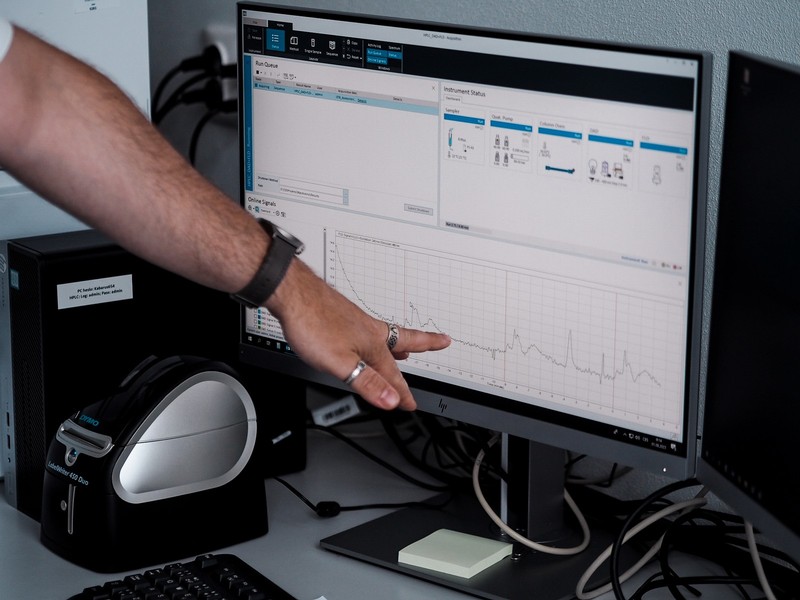
Ochratoxin A is the second most serious mycotoxin we know. The most serious is aflatoxin B1, which is also the most dangerous. Ochratoxin A is mainly nephrotoxic, meaning it has a somewhat unfavorable effect on the kidneys. However, you can name almost any toxic effect, and ochratoxin A will have it. It's hepatotoxic, negatively affecting the liver; immunotoxic, affecting the immune system; teratogenic, having a negative impact on fetuses; carcinogenic... That's a bit more complex because it's still not confirmed as a human carcinogen. It falls into category 2B, possibly carcinogenic to humans. So far, it has been shown to be carcinogenic to animals.
And where could we find it? Where does ochratoxin A come from?
Well, practically anywhere. Certain molds of the Aspergillus and Penicillium genera produce ochratoxin A. The Aspergillus genus is typical in areas with subtropical or tropical climates, but it is gradually making its way to us. On the other hand, the Penicillium genus is typical in temperate zones. However, due to the globalization of the market, it's essentially the same; you can find foods from the tropics and subtropics in stores. Moreover, even if molds don't heavily colonize them, they can still contain mycotoxins. Mold degrades, mycotoxins remain, they are highly stable, and standard food processing methods won't eliminate them. We can mitigate their impact by reducing their quantity, but the complete elimination or destruction of ochratoxin A is at around 200 to 250 degrees Celsius for about 15 minutes. Nobody regularly cooks at home at 250 degrees. So, we can only partially get rid of mycotoxins.
So, do we find it most in exotic foods here?
Not entirely. Mostly, we find it in cereal products and foods. That includes muesli, flakes, and even bread, quite commonly. That's roughly 60 to 65% of ochratoxin A intake into the body through food. Then we have meat, which is approximately 3 to 10%. Here, I always make a little insert when I tell students about ochratoxin – we carnivores are better off regarding mycotoxins. I can't deny the potential benefits of veganism or vegetarianism for the body elsewhere. However, considering mycotoxins, it's not the optimal diet because they get their protein from nuts, legumes, soy, and other products. Those are ideal substrates for mold growth and mycotoxin production. Ochratoxin A is commonly found in dried fruits, raisins, juices, wine, and beer. Anything you can think of, any food stored somewhere, can contain mycotoxins.
Is it possible to get rid of mycotoxins or at least limit them?
It's a naturally occurring substance, and even by following proper agricultural practices, it's impossible to avoid them completely. There are special techniques that can reduce mold production. That includes timely fertilization, plowing, and drying to prevent the grain from getting wet. Good storage in well-ventilated facilities and so on. This can prevent the formation of molds and, consequently, the production of mycotoxins. When mycotoxins are formed somewhere, removing them from the substrate is very difficult. Whether it's feed or another product from which the final food is derived... it's quite problematic. Everyday cooking, baking, or frying only slightly reduces mycotoxin levels by around 25%. Some sources state more, but when it comes to reducing mycotoxin content in final foods, it's a tricky subject. Even the scientific community is divided on this. One side says that the reduction of mycotoxins is minimal or negligible, meaning around 20 to 25%. But it's still better than nothing. The other side claims it's about 80 to 85%.
I see. So, which side do you lean towards?
It depends on the type of food. And it greatly depends on how the food is prepared and stored. In my master's thesis, I dealt with the transfer of ochratoxin A into coffee. That is, into the beverage. Unfortunately, the Czech bureaucracy complicates it a lot. When you say "coffee," people commonly envision the drink. However, the English term "coffee" also evokes "ground coffee". In toxicology and nutrition studies, you need to link science with bureaucratic terms. It's probably not straightforward.
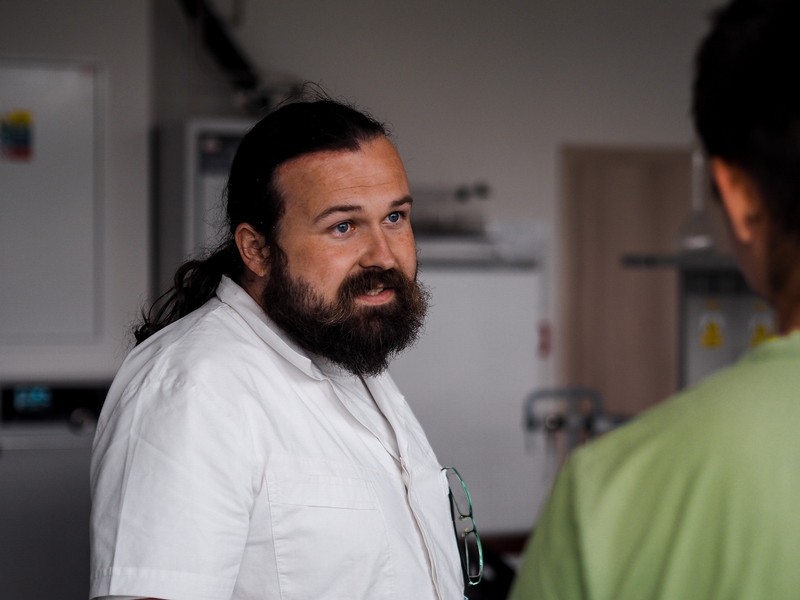 I understand, but bureaucracy often ensures consumer protection as well, right? It compels producers to label their goods accurately and sets up controls and limits.
I understand, but bureaucracy often ensures consumer protection as well, right? It compels producers to label their goods accurately and sets up controls and limits.
Be careful, there's a big problem. Apart from beer in our context – since it's undoubtedly one of the most esteemed products in the Czech Republic, I can say that every batch of malt is tested for mycotoxins. However, for numerous food commodities, this doesn't apply. We have limits established by the European Commission or our national limits for mycotoxin content in foods, but many commodities don't have any limits at all. They don't exist. Some countries have them, some don't. I often deal with foods that no authority regulates regarding mycotoxins. It's unsurprising; measuring mycotoxin content in a material is quite challenging. Consider animal products. They contain various proteins and fats. Fats pose an issue, as many substances bind to them. Fat entering the testing apparatus can cause interference, and you won't get accurate readings. Techniques for separating fat from the desired substance aren't easy.
Why is it complicated?
In the realm of food analysis, there's no universal method, whether extraction or separation, that's reliable for all products and consistently yields the required results. Thin-layer chromatography was used before; nowadays, screening methods like enzyme immunoassays are more common due to their speed. You get results in 3-4 hours. However, they have detection limits, and mycotoxins can metabolize, making the analysis more complex. I use liquid chromatography with fluorescence detection extensively. Other methods are related to mass spectrometry. These are all techniques to determine the presence or quantity of a substance in a sample. However, apart from people, you need instruments that cost millions or tens of millions of Czech crowns. So, achieving a combination of speed, affordability, precision, and universality is nearly impossible. Another problem is the business aspect.
In what sense? That you might be scrutinizing larger producers who, in terms of mycotoxins, aren't always entirely responsible, and they don't like it?
Well, yes, but it's more complex. I'll give an example but won't name anyone specific to avoid causing harm. A batch of nuts arrives from a South American country, peanuts. Well, they're not nuts per se. We classify peanuts as legumes, they fall under the bean family. But we understand each other. And maybe in these nuts, there's an excessive amount of mycotoxin. Ideally, the batch should be destroyed, sent to an incinerator, and that's it. Unfortunately, business is business. There's a record that this issue was indeed detected during an inspection. Because the company still wanted to sell it, they waited for the next shipment from the same country. There, they found that the mycotoxin content was within limits, so they mixed those two batches. Consequently, they obtained a homogenous mixture that was collectively below the limit and sold it. This is a significant problem, so sticking to limit laws is crucial for people because the average consumer a) usually doesn't know what mycotoxins are and b) primarily wants to eat. I don't want to frighten people explicitly. I must say and knock on wood that the system for detecting products exceeding mycotoxin limits is rigorous in Europe, and it's rare for something to slip through.
Did you directly participate in such testing and research? Did you find any similar discrepancies or higher mycotoxin content than allowed?
Well, I'll relate this to another beloved Czech product. In the summer of 2020, along with several colleagues, I conducted an interesting study on sausages. Our article has been published in a professional journal.
Sausages are specific to Central European countries like the Czech Republic, Slovakia, Austria, Germany, and Italy. However, this food is also produced in Asia, North America, and South America. An important finding was that all 200 samples from the Czech Republic tested positive for the presence of ochratoxin A. But don't be alarmed; this doesn't mean they are harmful or bad. Because, in this case, our market doesn't have established limits, we don't know what constitutes excessive levels. However, to even begin to think about long-term health issues, you'd have to eat a kilogram or two of sausages daily, and then you'd face different health issues. People generally consume more mycotoxins from baked goods. 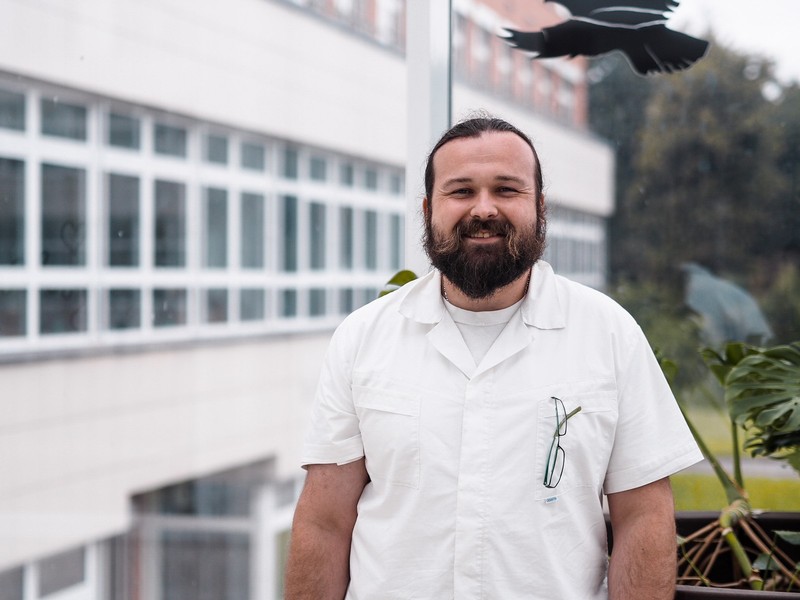
Furthermore, mycotoxins exhibit chronic toxicity, and their impact can be observed after 10 or 20 years. That's why we have a long-term collaboration with the urology department of the University Hospital in Hradec Králové. We collected and tested samples from patients with clear cell renal carcinoma. Occasionally, we find mycotoxins, but whether ochratoxin A was responsible for this particular case is still uncertain.
Yet, it's still good to avoid mycotoxins and be mindful of what we consume, isn't it? Can you advise on that?
Indeed, it's important not to eat monotonously and break away from something that Czechs are known for. As a nation, we are brand-loyal consumers. It's deeply rooted. You've probably heard your parents or grandparents say things like: "This is good, buy this." Even better if it's on sale, right? It's logical; some things work for us, so we consistently buy and consume them. However, from the perspective of any toxins, it's not the most suitable approach.
The issue with determining mycotoxins is that mold has a non-homogeneous distribution within the food. For example, tea is imported to us in hundred-kilogram packages. The mold might grow in the upper right corner, maybe because it got wet during transport. A tester might only take a sample of about 100 grams from the center using a scoop and not find anything. The batch seems fine. However, when collecting mycotoxin samples, homogenizing the entire package is necessary, which makes the process more challenging. The tester should use quartering, essentially mixing the batch as a whole to homogenize it.
So, suppose I were to advise the average consumer on how to avoid mycotoxins. In that case, I recommend switching brands and eating diversely rather than monotonously, and that's the most important thing.
Then, of course, there are procedures nicely outlined by my aforementioned colleague, Dr. Ostrý from the State Health Institute in Brno – strategies for avoiding mold at home, what foods to buy, regular cleaning, etc.
Another topic I wanted to touch upon is the issue of scientific projects. You've been involved in a number of them, and you were a co-researcher on a project funded by the Czech Technology Agency. How difficult is it to secure project funding in today's competitive environment? To what extent do scientists directly participate in the application process?
Ok, I'll give you another example. Just imagine we recently applied for a Czech Health Research Agency project grant. Every year, there are around 400 to 450 applications, and they grant funding to a maximum of 20%. Which, in fact, is a good probability of getting funding. However, in previous years, projects related to COVID-19 predominated, and ours wasn't, so we didn't receive funding.
Nevertheless, the initial project submission feels like leaping into the void. You gather all possible materials for the application. Projects in my field are usually submitted in collaboration with some clinical institution. In our case, it was the University Hospital in Hradec Králové; we highly value these partnerships. An essential part of the application is, of course, the financial plan. You must specify in advance how much the materials will cost, how many samples you'll prepare, etc. But, predicting market prices for a project that might last three or four years is quite complex, especially in the current era of high inflation.
As a scientist, you don't always understand these technicalities, but someone needs to do that work. Moreover, you don't know whether the project will receive funding, so you might feel like you did the work in vain. I don't see it that way; they're still experiences that I'll apply elsewhere or at another time. I don't engage in science for money; that's not really feasible. You'll only be financially compensated for a portion of the extra hours unless you discover a cancer cure or win a Nobel Prize for something. Generally, though, science often helps people quite discreetly, without drawing much attention.
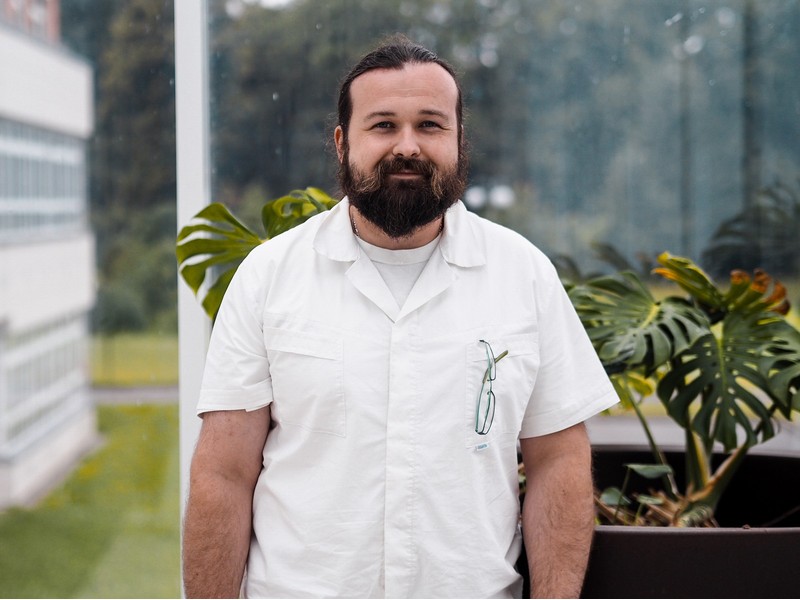 In other interviews with scientists from UHK, we also talked about the issue of publishing scientific articles, which are often a part of or the main output of various projects. What are your experiences with scientific journals?
In other interviews with scientists from UHK, we also talked about the issue of publishing scientific articles, which are often a part of or the main output of various projects. What are your experiences with scientific journals?
Well, that's very complicated. In natural sciences, similar to other fields, there are both good and bad scientific journals. The bad ones include what we call "predatory" journals. They offer expedited peer review for a fee, so your article can be published in a week or two. It's very tempting for scientists, but it's essential to realize that the peer review process is robustly designed for a good reason – to prevent the publication of scientific nonsense.
Furthermore, the publication fees in these journals are often very high, like two or three academic salaries, especially in the Czech context. Not everyone can afford that, so securing funding from other sources, such as the university, faculty, or a grant agency, is necessary. These institutions guard their reputation logically, so when writing proposals, scientists must also research reputable scientific journals, which they primarily seek for publishing their outputs.
However, publication fees aren't only required in "predatory" journals. There's also the option of open access, where you pay to make your article freely accessible, even for people who don't subscribe to the journal. In this regard, it's positive and desirable, but now we're entering a slightly different topic – the accessibility and openness of science.
Alright, the last question regarding science. The rector of UHK, Kamil Kuča, is a known toxicologist-chemist. You also deal with toxins but from a biological perspective. How significant is the difference, and is there enough space for the now popular multidisciplinarity in scientific topics?
Let's say the main difference between chemistry and biology, in terms of toxicology, is the reason why a scientist investigates something. Here, we study toxins and their impact on organisms. We're also interested in their origins so that we can contribute to regulation, for example, in terms of food quality.
Chemists study toxic substances, for instance, to understand the structure and interactions of certain molecules. This helps them discover potential applications, like creating antibodies, drugs, etc. So, yes, multidisciplinarity is possible, and it's happening. Then, it's necessary to reconcile the different interpretations of scientific outputs. From one laboratory test, I, as a biologist, might draw different conclusions than a chemist.
Besides producing science, academic staff at Czech universities are also expected to teach. How do you manage to balance the roles of a scientist and an educator?
Honestly, there's no objective balance to be found here. Everyone does it differently, and everyone finds different conditions suitable. Abroad, I've encountered academics who only teach while others focus solely on research. I teach quite a bit; I have many subjects, and teaching up to 27 hours per week in a given semester is not unusual for me. When you factor in the preparation time for those hours, there is little time left for research. Nonetheless, I found a system that works for me. I teach a lot in one semester and focus on research in the other. Then, there's at least a bit of tranquility.
Teaching students in the natural sciences is quite specific; you need to spend more time with individual students, like when you're teaching them how to work with a microscope or prepare samples. One lab can accommodate about 16 people. When you have around a hundred students in a year, that means a lot of small groups and, consequently, a lot of taught hours. But it makes sense, especially for subjects in laboratories.
I don't demand that students know the exact composition of every dye; that can always be looked up. What's important to me is that students can navigate the lab, know how to use different tools, and handle any problems.
I also prefer oral exams, where you can give students the opportunity to defend or adjust their answers. I often ask students "why?" because I want to know if they're thinking critically about the answer. This kind of examination takes much longer than simply distributing a test to all students and then grading it.
Thank you for the interview!
Thank you.

